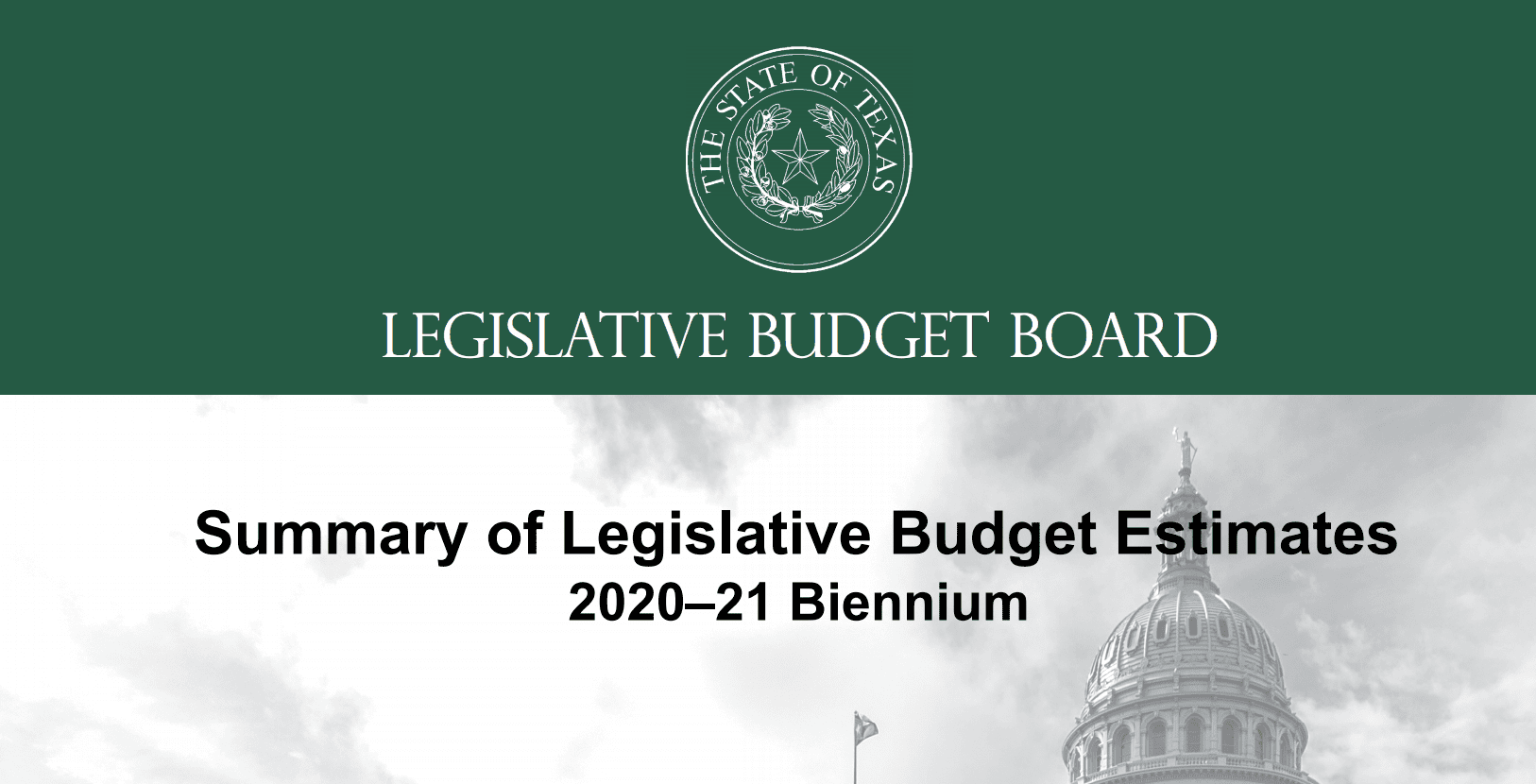Higher education is a critical tool for economic prosperity for all Texans. The outcome of the 2019 Texas legislative session, during which lawmakers determine state financial support in 2020 and 2021 for higher education and other state-supported services, has a significant impact on Texas students.
This month, the Texas House and Senate introduced their budget bills for 2020-2021, laying out draft proposals for how budget writers will allocate revenue across the state’s many priorities.
The House and Senate starting-point proposals for higher education are similar, with General Revenue, General Revenue-Dedicated (primarily tuition), and other funds recommended at $21.1 billion, a 1.6 percent increase from 2018-2019.
Mental Health Care Consortium
There are important differences in how lawmakers allocate the total budget amounts. Notably, the Senate recommends almost 11 percent more in General Revenue for the Texas Higher Education Coordinating Board (THECB), compared to the House’s four percent boost. This difference is mostly due to the Senate’s $100 million General Revenue proposal for Senate Bill 63 or similar legislation creating a Texas Mental Health Care Consortium. The Consortium would leverage health-related institutions to improve mental health and substance abuse research and efforts across the state.
Funding Fails to Deliver on 60×30 plan
The THECB, in its April 2018 formula funding recommendations for 2020-2021, laid out how much state support would be needed to achieve the goals of the Texas Higher Education strategic plan, known as 60x30TX. This ambitious plan aims to have 60 percent of Texans ages 25-34 earning a postsecondary credential by the year 2030. Taking into consideration inflation, population growth, and demographic changes, THECB recommended an overall increase for higher education funding formulas of 8.2 percent in 2020-2021, compared to 2018-2019.
In the draft budgets, however, lawmakers barely address formula-driven increases. As the official summaries put it, “For most of the higher education formulas, the 2018-19 biennial rate is maintained.” In recommending a mere 1.6 percent increase overall, both the House and Senate budgets fall significantly short of meeting the higher education needs of Texans.
In fact, the currently recommended 1.6 percent increase hardly meets the THECB inflation estimate of 1.7 percent for the next two years. That means that, at the currently proposed rates, Texas higher education institutions will barely have enough state funds to cover inflation, and can’t even begin to cover the growing student populations and expected increased need for additional financial resources for students with state funding.
Students and Families will Bear the Burden of Under Funding
What insufficient state funding could mean for Texas students is an increased burden on Texas families forced to pay higher tuition and fees for students to attend college in Texas. And while less state funding could mean higher tuition, the starting-point state budget could also require a smaller average per-student award for the TEXAS Grant, a critical instrument in helping Texas families pay for higher education.
Both the House and Senate propose $393 million a year for the TEXAS grant in 2020-2021, the same amount as in 2018-2019, even with a projected addition of nearly 7,700 students. That means that proposed TEXAS grant funding actually decreases by almost $540 per student between 2019 and 2021.
CPPP Recommends Investing in Our Students
There is still time, as well as available revenue, to improve state support for higher education both for institutions and for students, through formula support and through financial aid such as the TEXAS Grant Program.
In the coming weeks, lawmakers will hold public hearings, and committee “mark-ups” will take place through March. Amended budget proposals should pass through the state House and Senate in the spring, and a compromise (“conference committee report”) should come in late May before the regular session ends. Between now and then, it is essential for state budget writers to acknowledge that Texas needs more resources so the state can meet the goals of 60x30TX and make Texas a national leader in higher education.
